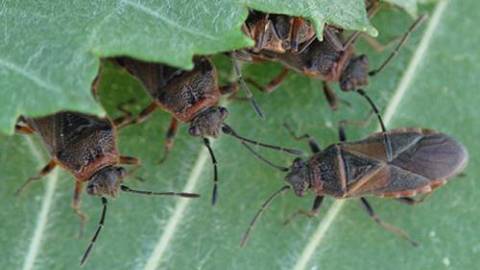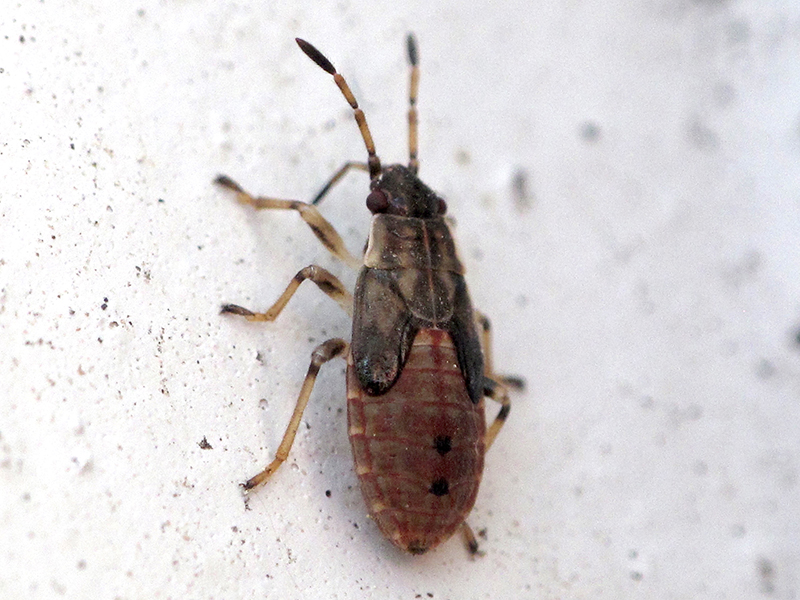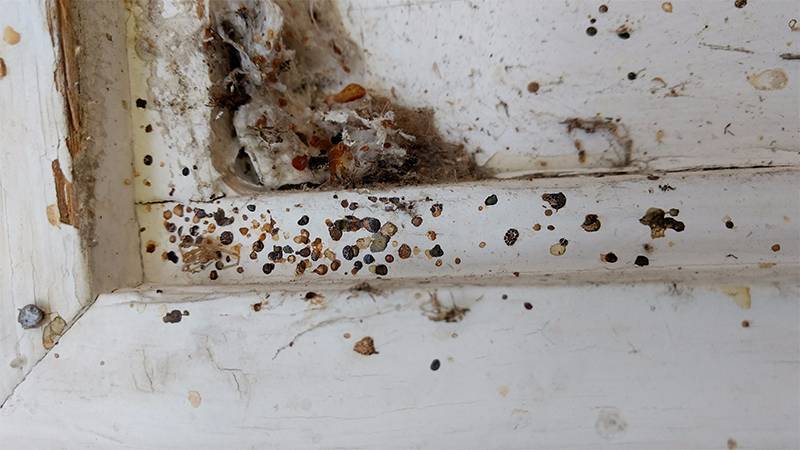Integrated Pest Management
Elm Seed Bug
 Adult elm seed bugs (Ryan Davis, Utah State University)
Adult elm seed bugs (Ryan Davis, Utah State University)
 Elm seed bug nymph (Ryan Davis, Utah State University)
Elm seed bug nymph (Ryan Davis, Utah State University)
 Elm seed bug feces (Ryan Davis, Utah State University)
Elm seed bug feces (Ryan Davis, Utah State University)
HOSTS
- Seeds of Elms
- Seeds of Lindens
DESCRIPTION
As a member of the seed bug family (Lygaeidae), this insect feeds primarily on elm seeds, but has also been reported on linden and oak. In Utah and Idaho, it has also been observed feeding on elm leaves. In Utah, as in other locations, this insect has become a major nuisance pest, entering homes and buildings in great numbers, similar to the boxelder bug.
BIOLOGY
Adults are about 1/3 inch long with dark, rusty-red and black coloration. On the back, there is an upside-down black triangle set inside two rusty-red triangles.
Immature elm seed bugs are similar in appearance to immature boxelder bugs and false chinch bugs. Smaller nymphs have a deep red abdomen and black head and thorax. As they grow, nymphs develop black wing pads, and the abdomen takes on a mottled pink color with two black dots in the middle of the back.
SYMPTOMS
- No damage done to trees
- Large numbers of nymphs gathered on tree trunk
GENERAL MANAGEMENT
Elm seed bugs are a major nuisance pest and efforts should be made to exclude them from entering the home. Exclusion and other non-chemical tactics include sealing windows and doors as tightly as possible, vacuuming up elm seed bugs found on or inside the structure, and consider removing volunteer or established elm trees from around the structure and property.
INSECTICIDES
Chemical management of elm seed bugs can be focused on killing nymphs in trees or perimeter barrier applications to prevent elm seed bugs from entering the home. To target nymphs in trees, apply an appropriately labeled pyrethroid insecticide to elm foliage when monitoring indicates their presence.

